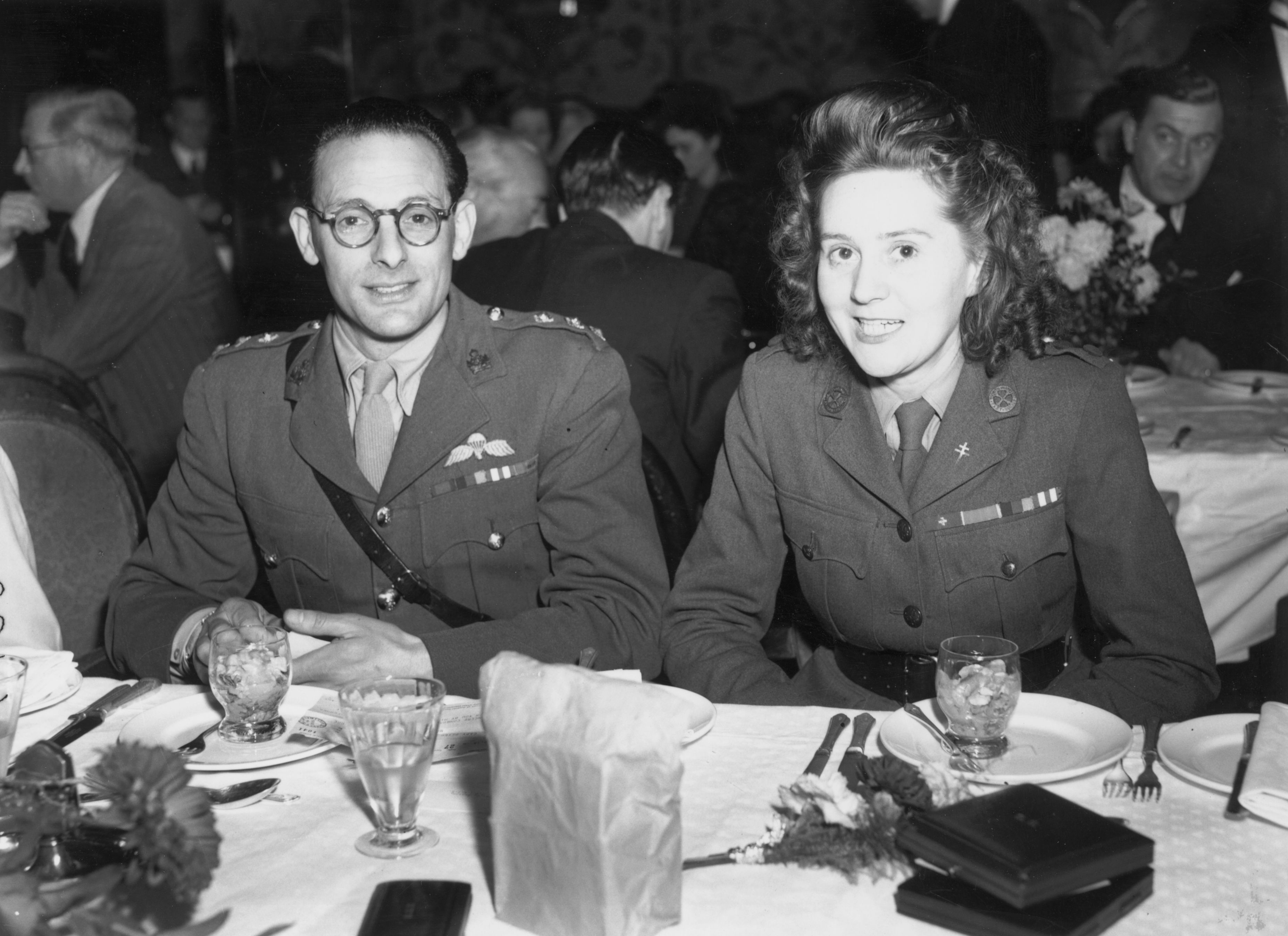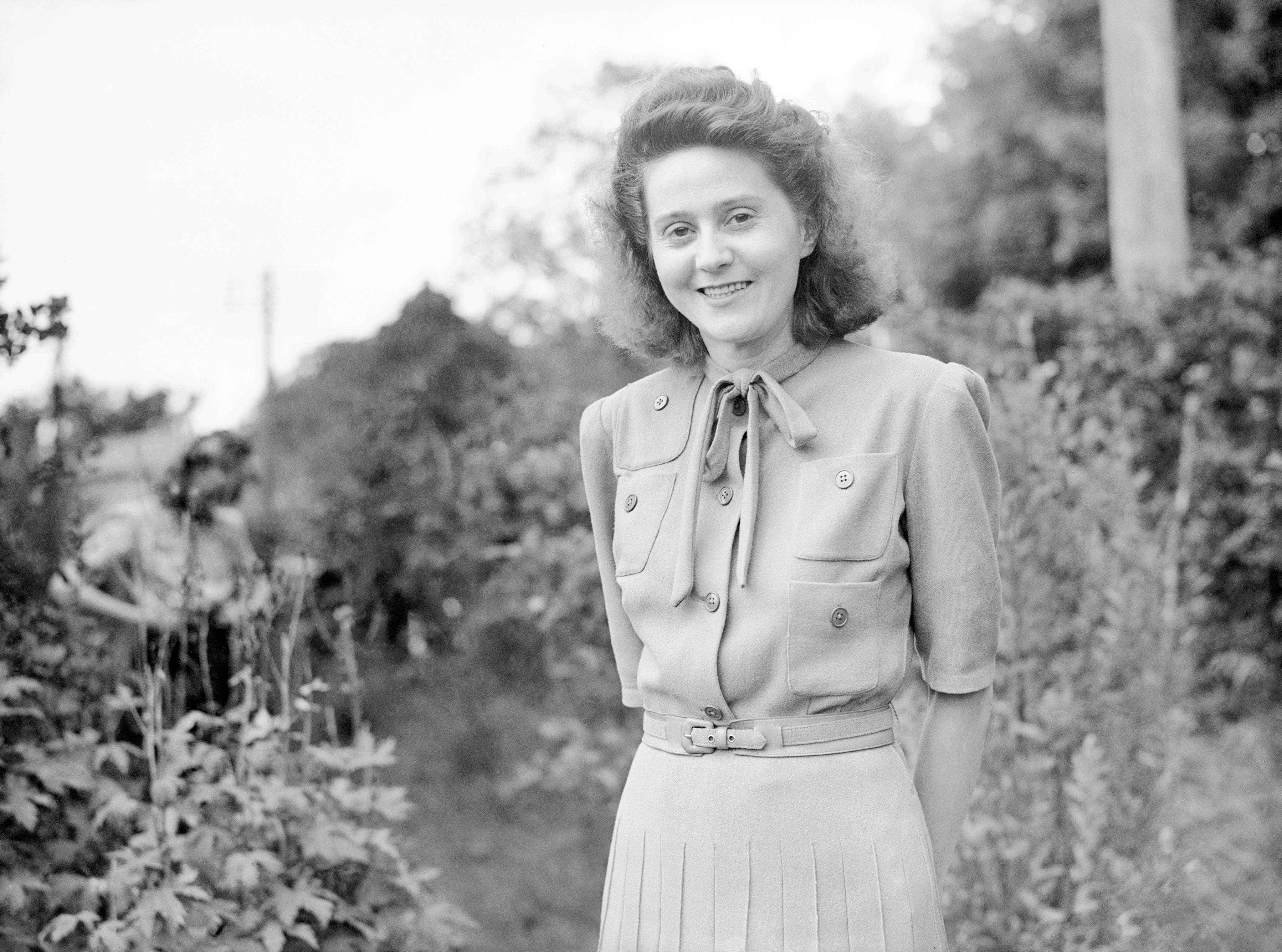Arrest and execution awaited almost one in two members of the British Special Operations Executive F Section (France). Those were the odds that Odette Sansom faced when she joined the SOE in 1942.
Designed as a guerilla campaign against the Axis, SOE soldiers operated outside the typical chain of command and were directed to inflict as much damage as possible — by any means necessary — to enemy forces.
SOE agents accepted almost assured death, but signing on to be an SOE courier was even more hazardous. Female couriers operating in occupied France had the second-highest Allied fatality rate of the war — 42 percent, behind only Bomber Command’s 45 percent, according to Larry Loftis, author of CODE NAME: LISE.
Born in Amiens, France, in 1912, Sansom later emigrated to the island nation after her marriage to an Englishman. She was living in Somerset with their three children at the outbreak of WWII when the housewife answered the appeal of the Royal Navy in the spring of 1942 for images of the French coastline.
Eager to aid in the war effort, the French native sent off her private collection of photographs taken from around the area of Calais. Through a mix-up, Sansom mistakenly sent her photographs to the War Office, not the Admiralty. Yet it was this error that altered the course of her housewife’s life.
Her photographs — and her nationality — caught the attention of Duncan Guthrie and Captain Selwyn Jepson, recruiting officers for the F Section of the SOE. Sansom’s heritage and knowledge of the French coast, the agents figured, could prove to be useful.
“My belief in God is that I believe in the soul of people…and I believe that we’ve got to use it,” Sansom later recalled to the Imperial War Museums. She volunteered.
At the Beaulieu estate in Hampshire, she was taught self-defense, Morse code, and how to resist interrogation. Her teachers described Sansom as enthusiastic and competent but also “excitable and temperamental,” “impulsive and hasty in her judgments,” and that “her main weakness is a complete unwillingness to admit that she could ever be wrong.”
Despite her less than glowing report, Sansom was allowed to finish her training at Beaulieu, later becoming became Agent S.23.
Operating under the codename LISE, Sansom arrived in Cannes, France on October 31, 1942, and began working for Captain Peter Churchill as a courier in the SPINDLE SOE circuit run.
“SOE circuits were comprised of three agents: circuit leader, courier and radio operator,” writes Loftis. “These three would then recruit, arm and work with local French Resistance fighters to sabotage German trains, barges, bridges and supply depots. In some cases, hit-and-run guerilla attacks were staged. To accomplish these tasks, couriers carried messages and money to their associates almost on a daily basis.”

As part of a trio, Sansom worked as a courier alongside Churchill and Russian-born, Egyptian-raised Adolphe (Alec) Rabinovitch, whom Churchill later described as a “violent, difficult, devoted, and heroic radio operator.” Rabinovitch would not survive the war.
Posing as Madame Odette Métayer, a widow from Saint–Raphaël, Sansom worked for only several months with her SPINDLE comrades before Sansom and Churchill were betrayed by a member of their network to a German secret policeman, Sergeant Hugo Bleicher.
Arrested on April 16, 1943, the two were sent to Fresnes Prison in Paris and interrogated by the Gestapo. There, Sansom saved Churchill from certain torture by telling the Germans that it was she, not Churchill, who was the circuit leader.
Held for several months in the capital, Sansom was brutally tortured for the whereabouts of Rabinovitch and other fellow agents, yet to every question, she simply replied, “I have nothing to say.”
Her refusal saved the lives of countless others.
“It was clever…the Germans almost always used someone of your own nationality to torture you so you could never say that it was a German,” said Sansom. “In my case, it was a very good-looking young Frenchman who tortured me.”
When it became clear that Sansom would not break, she was sent to Nazi Germany’s largest concentration camp for women — the feared Ravensbrück.
Barely surviving on starvation rations, “for three months and eight days she languished in a small cell” in Ravensbrück writes Loftis. “Save five minutes a day when the overhead light was illuminated, she sat in total darkness. Her body was soon covered in scabs, and she suffered from dysentery and scurvy. Her hair began falling out, her teeth became loose and she lapsed into a semi-coma.”
Sansom managed to survive despite the inhumane conditions, eventually convincing her German guards that she was married to her fellow agent, Peter Churchill, and fudging that her “husband” was an important relative of the British prime minister.
Despite no relation to the wartime PM, under the aegis of the Churchill name, both SOE agents were kept alive. News of their so-called family ties managed to reach the desk of Winston Churchill. He never contradicted its validity.
By war’s end, Ravensbrück’s commandant, Fritz Suhren, decided to utilize the Churchill name to his advantage. Taking Sansom as barter to the approaching Americans, the commandant attempted to leverage the spy for his own freedom.
Instead, upon word from Sansom, the Americans arrested Suhren. After nearly three years in captivity, the SOE agent was free.
Sansom later gave critical evidence against the commandant and other Ravensbrück staff at the Hamburg Ravensbrück trials. Suhren was later hanged for war crimes.
In addition to using the name Churchill as a shield, Sansom credits her attitude of defiance to her survival.
“You have to keep your mind healthy, it’s the only way to survive,” she told the IWM. “If not, it’s their victory. They have got you physically and mentally…it’s a complete victory as far as they are concerned. You are left with nothing.”
“I kept my own identity,” she continued. “I learned that it was better. The only attitude to have is to dismiss them.”
For her war efforts, Sansom was awarded an Order of the British Empire (Member); a Chevalier de la Légion d’Honneur, France’s highest decoration; a George Cross, Britain’s second-highest honor; and five other medals.





